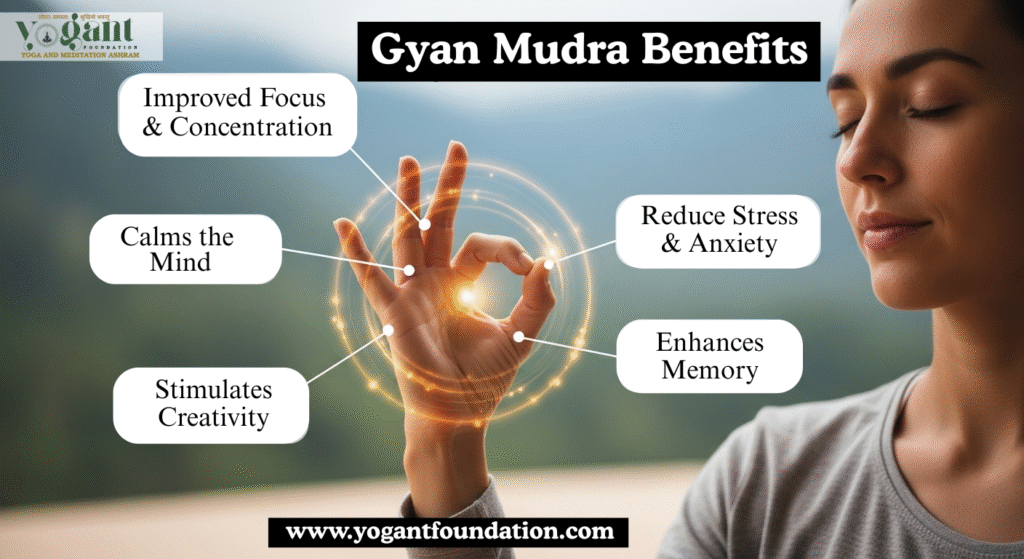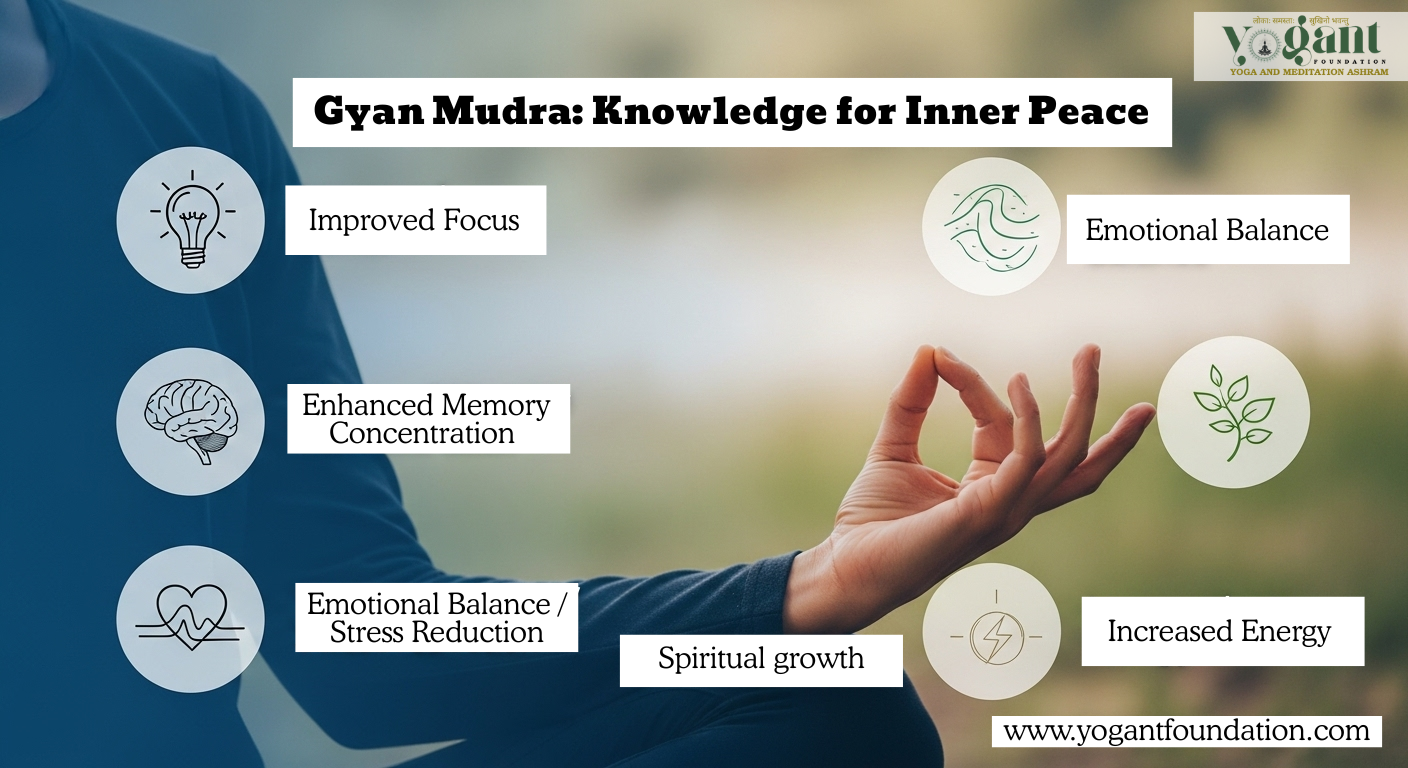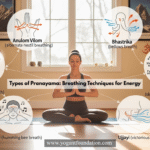Gyan Mudra knowledge for Inner Peace
Gyan Mudra has a unique place in the worlds of meditation and yoga. The Hand Mudras (gestures) that promote mental clarity are one of most popular and powerful. Gyan Mudra represents the union of personal consciousness and universal consciousness.
The simple act of connecting the tip on the thumb with the of the index fingers has been used by many sages and yogis for hundreds of years. They claim that this gesture activates the energy circuits in the brain, increasing calmness, intuitiveness, and self-awareness.
Explore its symbolism and technique to learn how it can benefit you.
What is Gyan Mudra?
Gyan Mudra, also known as Mudra of Knowledge, is one of the most commonly practiced hand mudras in Meditation and yoga. The word ‘Gyan’, which means knowledge, is a Mudra.
By joining your index finger tip with your thumb, you can form a Gyan Mudra that symbolizes your union with your individual consciousness (Atman).
This hand gesture is powerful and calms down the mind. It can also boost concentration. The hand movement is often used by Hatha Yoga, Ashtanga Yoga, and Pranayama Practices in order to increase mental clarity.
Meaning and Symbolism of Gyan Mudra
The five elements are represented by each finger (Pancha Mahabhuta). The index hand represents the Air element. And the thumb is Fire.
It creates harmony by balancing the air and Fire. Symbolically, it tells us how surrendering our ego (index) to the divine truth (thumb) will awaken higher knowledge.
Guide on How to Perform Gyan Mudra
It can be practiced easily, but with regularity and awareness, it becomes more powerful.
Steps:
- Seated comfortably, either in Padmasana (Lotus Pose), Sukhasana.
- Straighten your spine, and keep your shoulders relaxed.
- To do this, touch the end of the thumb with the tips of your index fingers.
- Hold your fingers out gently.
- Keep your palms upwards when resting your hands (to receive energy).
- Concentrate on the breath and close your eyes.
- Continue to maintain this position for 15-45 minutes each day.
Tip for beginners: Start with 10 minutes, and increase it gradually.
When and how long to practice?
- In the morning, (Brahma Muhurta), between 4:00 and 6:00 AM, to enhance focus and spiritual progress.
- While meditating, to deepen awareness and stillness.
- Relax and sleep better before you go to bed.
Duration Practice for at minimum 15 Minutes daily. You may also break it up into shorter sessions.

Gyan Mudra Benefits: Mind, Body & Spirit
Practiced regularly, brings harmony at all levels – physical, mental, and spiritual.
1. The memory and concentration are improved
Gyan Mudra increases the activity of prefrontal cortical neurons in the brain. This helps to improve your memory, intellect, and ability to make decisions. Ideal for students as well as professionals.
2. Calms Anxiety & Reduces Stress
The air element balances out the nervous and emotional system. This helps to reduce Stress and anxiety.
3. Deepens Meditation
It is a great tool to use during Meditation and Pranayama.
4. This product activates the Crown Chakra and, Third Eye Chakra
It activates both the Ajna (Third Eye) and Sahasrara chakras. It leads to increased intuition and spiritual awakening.
5. Boosts Energy and Vitality
You will feel more alert and motivated.
6. Balance the Endocrine and Nervous Systems
Regular exercise improves your mental and physical well-being by improving nervous system functioning and hormone regulation.
7. Sleep quality can be improved
It is a powerful tool to reduce insomnia. It also induces deep relaxation.
The Elemental Connection of Gyan Mudra
In the science of yogic art, Mudras balance five different elements – Fire, water, space, air, and earth.
Finger Element Function
| Finger | Function | |
| Thumb | Fire | Change the energy |
| Index | Air | “Movement of the mind” |
It is believed that when the (air) (thumb) element meets with air (index), this stabilizes it. This is what causes mental activity. It can calm down restless thoughts as well as improve intellectual balance.
The Science Behind Gyan Mudra
In a scientific sense, fingers have nerve endings and energy meridians. It is believed that when you perform Gyan Mudra, it creates an electrical circuit which promotes the movement of the life energy in the body.
This:
- Balance the system of the autonomic nervous system.
- Regulates hormones,
- Reduces the stress hormone.
- Enhances Brainwave Synchronization while meditating.
The perfect combination of ancient wisdom and contemporary neuroscience.
Meaning of Gyan Mudra
It is very symbolic. This symbolism is deep.
- This is the fusion of cosmic and individual consciousness.
- It is the dissolution of ignorance and ego.
- Jnana means the spiritual awakening.
Images of Buddha or Shiva, as well as yogic teachers, often show them in it while meditating. This gesture represents wisdom and illumination.
Safety Tips and Warnings
It may be safe for all, but keep in mind these safety tips:
- Exercise on an empty tummy or for at least 2 hours after a meal.
- Do not press the fingers too hard.
- Regular practice will yield lasting results.
- Be aware of your breathing and posture.
The Difference between Chin Mudra and Gyan Mudra
Gyan Mudra, also known as Chin Mudra, has slightly different uses.
| Feature | Gyan Mudra | Chin Mudra |
| Palm Direct | Afterward | Looking Down |
| Energy Flow | Receiving Energy | Grounding energy |
| Ideal For | Meditation is a form of knowledge | Calmness |
The two can be used in conjunction, depending on what you want to achieve- Gyan Mudra, for awareness; Chin Mudra, for grounding.
Chakra Healing and Gyan Mudra
- Ajna (Third Eye Chakra): Increases intuition, inner vision, and clarity.
- Sahasrara Chakra, Crown: Helps to connect you with divine consciousness and peace.
With consistent practice, the chakras gradually open, resulting in higher levels of consciousness and spiritual advancement.
Integrating Gyan Mudra into Daily Life
It does not require a Yoga mat. Try this:
- Stay focused when studying or working in the office.
- Traveling calmly is important.
- Relaxing the mind is important before sleep.
Just 10 minutes daily of mindful meditation is enough to bring peace and clarity.
It has adopted as the standard hand gesture of Meditation in Raja Yoga and Hatha Yoga. It can help:
- Breathe in steadily
- The mind is focused
- Elevate consciousness
Pair it with Pranayama such as:
- Anulom Vilom
- Bhramari
- Kapalabhati
The flow of energy is increased and meditative consciousness deepened.
A simple daily routine
- Sit in a quiet place early morning.
- You can close your eyes and do the Gyan Mudra.
- Breathe slowly and deeply for 10 breaths.
- Chant the word “Om” and any other affirmation, such as: “I feel calm and focused.” “
- Enjoy the tranquility of your mind for 10 to 15 minutes.
The practice of Meditation can improve your productivity and mood throughout the day.
Scientific and Scriptural Roots
Mudras, as described in ancient texts including the Gheranda Samhita and Hatha Yoga Pradipika, are tools that can awaken Prana Shakti.
These teachings are supported by modern science, which shows that mudras can improve coherence of the brain, flow of oxygen, as well as mind and body synchronization.
Gyan Mudra combines ancient traditions with mindfulness, making it a useful tool for the modern world.
Conclusion – The Power of Gyan Mudra
Gyan Mudra is not only a simple hand position, but also a portal to the self.
The simple gesture is a reminder that happiness, joy, and knowledge are all within. If you practice this gesture consistently, it can:
- Calm your mind
- Increase focus
- Awaken your spiritual potential
Each time you’re feeling stressed or scattered, do the Gyan Mudra. Then close your eyes and inhale deeply. You will discover that the answer to all your questions lies within yourself.
The Wisdom of the Universe is at Your Fingertips.
Summary Table
Aspect & Details
| Aspect | Details |
| Sanskrit Name | Gyan Mudra (ज्ञान मुद्रा) |
| Meaning | Gesture of Knowledge |
| Equal Balance | Air (Vayu) & Fire (Agni) |
| Duration | 15-45 minutes daily |
| Benefits | Focus, memory and spiritual growth |
| Chakra Activation | Crown Chakras with Third Eye |
| Difficulty | Très Easy |



